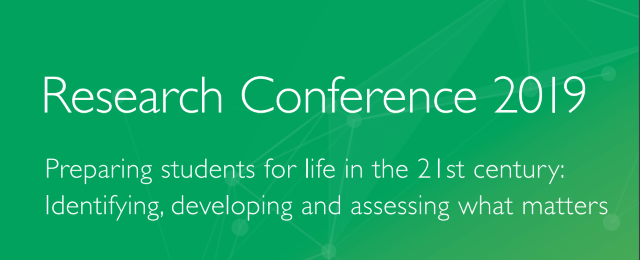
Monday 5 August 2019
Start Date
5-8-2019 9:00 AM
End Date
5-8-2019 10:00 AM
Subjects
Teacher evaluation of student performance, Teacher effectiveness, Teaching profession, Self efficacy, Learning communities, Data analysis, Data interpretation, Evaluation methods
Abstract
Teachers across Australia inspire students to love learning. Our best teachers are constantly evaluating their impact on learning outcomes and adapting their practice – balancing the art and science of teaching. As we move rapidly towards the third decade of the 21st century, there is more pressure than ever for all teachers to deliver both deep discipline knowledge and the skills students need to survive and thrive in the workplace of the future. We need to use technology and data to support teachers to maximise learning outcomes for their students. This has to be done in a way that helps teachers, rather than placing an additional burden on them. Being able to more accurately identify where each student is at in their learning, and delivering the next challenging but achievable step, will maximise student engagement and inspire a love of learning.
Recommended Citation
Bruniges, M. (2019, August 05). The science behind the art of teaching: Evaluation as inspiration [Paper presentation]. Research Conference 2019 - Preparing students for life in the 21st century: Identifying, developing and assessing what matters. https://research.acer.edu.au/research_conference/RC2019/5august/12
The Science Behind the Art of Teaching presentation
Copyright Statement
Copyright Australian Council for Educational Research 2019
Place of Publication
Melbourne, Australia
Publisher
Australian Council for Educational Research (ACER)
ISBN
9781742865546
Included in
Educational Assessment, Evaluation, and Research Commons, Elementary Education Commons, Secondary Education Commons
The science behind the art of teaching: Evaluation as inspiration
Teachers across Australia inspire students to love learning. Our best teachers are constantly evaluating their impact on learning outcomes and adapting their practice – balancing the art and science of teaching. As we move rapidly towards the third decade of the 21st century, there is more pressure than ever for all teachers to deliver both deep discipline knowledge and the skills students need to survive and thrive in the workplace of the future. We need to use technology and data to support teachers to maximise learning outcomes for their students. This has to be done in a way that helps teachers, rather than placing an additional burden on them. Being able to more accurately identify where each student is at in their learning, and delivering the next challenging but achievable step, will maximise student engagement and inspire a love of learning.

